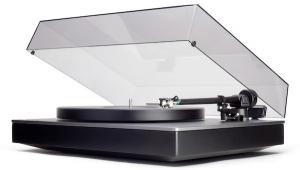Have you heard the new Brinkmann RoNt ll tube power supply with the Bardo? This seemingly minor upgrade will significantly narrow the gap between the Bardo and Caliburn.
The added resonance and bass is unmistakable in A/B comparisons with the supplied power unit - Music Lovers in San Francisco recently gave a demo of this upgrade, and everyone involved noted the huge improvement. With the RoNt ll and an upgraded tonearm/cartridge (Kuzma, Graham, Benz LP S MR, etc.), it makes the Bardo a high end bargain, compared to more stratospherically priced turntables.























































